All Rights Reserved © Ji Chuanying Ancient Building Construction Co.,ltd.
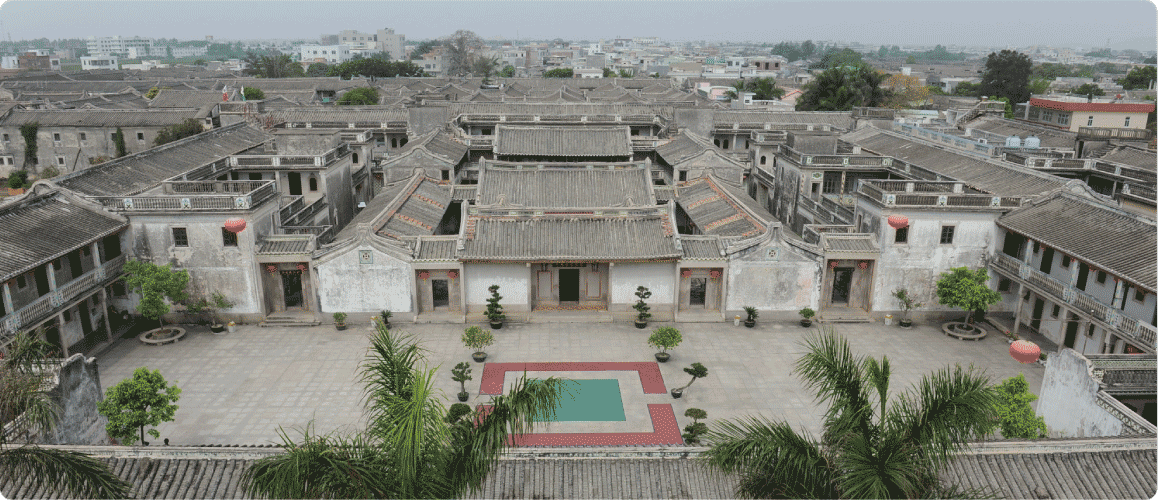
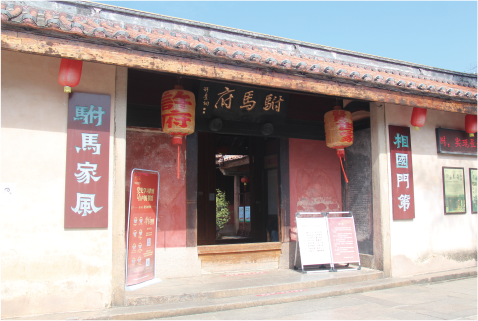
Xu Concubine's Mansion
Chaozhou Xu Concubine's Mansion is the residence of Xu Jue, the concubine of Princess De'an, the daughter of Emperor Yingzong of the Northern Song Dynasty. The main building is three into five rooms. The first entrance and the back seat are equipped with a mountain hall, and the rooms are combined into nine rooms. The east and west enclosures of the central hall lead from the hall, room and study. Behind the upper hall is a backyard that runs across the whole house. The three entrances of the main body and the hills form an "I-shaped" pattern. The enclosed house is hidden outside the gables on both sides of the middle block, forming a unique setting of a single hall, a single courtyard, and a single patio. It is the earliest form of the existing Chaozhou "fudi style" dwellings. Beginning with the Concubine's Mansion in the Song Dynasty, this kind of "mansion-style" dwellings with shelters gradually became popular in Chaozhou.
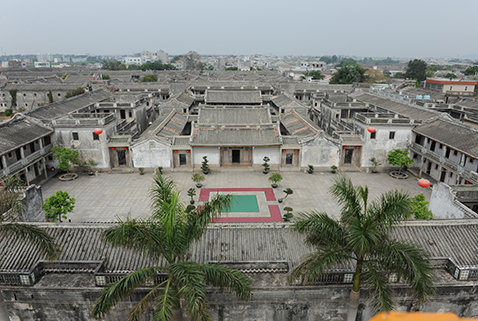
Chen Cihong's Former Residence
Including Langzhongdi, Shoukangli, Shanjushi and Sanlu Study, it was built in the second year of Xuantong in the Qing Dynasty (1910). The wing room imitates the building of the Beijing East-West Palace, surrounded by double-storey western-style buildings. Each courtyard has a large courtyard with a small courtyard, and a large residence with a small house. It not only has pavilions and pavilions, western-style balconies, but also has a sentry station and a bridge overpass. Therefore, it is called "Chaoshan Small Forbidden City" and "the first overseas Chinese residence in Lingnan".
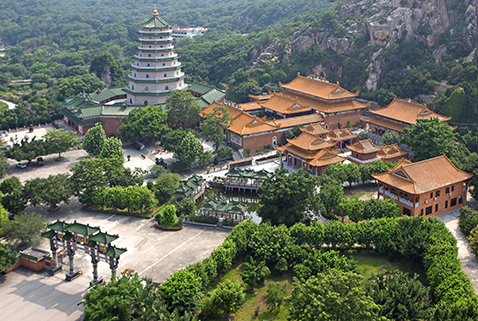
Temple of Heaven Garden Baihuajian
Located at the seashore at the east foot of Shantou Yushi Scenic Area, Guangdong Province, there is a big temple with the largest single area in the province - Baihuajian Temple, also known as the Ninth Heaven Niangniang Temple. The construction of the temple involves mud, wood, stone, oil, paint, inlay, sculpture, sculpture, and Guyun, a collection of various kinds of skilled craftsmen from Chaoshan folk. With its grand scale, elegant and unique, and full of folk culture and art landscape, it can be called "Chaoshan Folk Culture Grand View Garden".
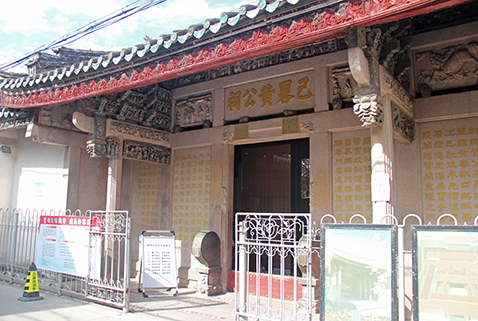
Huang Gongci
It was built in the 13th year of the reign of Emperor Guangxu of the Qing Dynasty (1887), with a face width of 15.4 meters and a depth of 25.7 meters. It is a temple with two entrances, facing south from the north. Between the first entrance and the back hall is a patio, with corridors on both sides, and the back hall has a tower, forming a pattern of four halls facing each other. The roof truss of the middle slot in the back hall is“ Thirty five pieces of papaya” Typical structure of. The forehead is engraved“ Huang Gongci has been omitted” 5 characters, engraved“ on the back; Filial thinking is”. The whole ancestral hall has a unique architectural structure. The walls on both sides and around the gate are inlaid with exquisite landscape stone carvings, especially the hollow double-sided carvings on the roof truss of Mamianpo. The main hall is 3 rooms wide and the bright room is large. The roof truss is a beam lifting structure, with a hard mountain top. The hall lintel is decorated with gold paint paintings. The two ends of the beam beam are decorated with auspicious animals such as dragons, phoenixes and lions with different images; Between the beams and columns, there are vivid and rich dramatic wood carving bronze sparrow terrace, Zhang Yu boiling the sea, flooded Jinshan Temple and other carvings, which are lifelike and elegant. The ridge is decorated with porcelain color painting. Exquisite carving, landscapes, characters; Flowers, birds, insects and fish are in a variety of forms, which have a high level of craftsmanship and artistic appreciation value. The whole building has fully used the three unique techniques of Chaozhou wood carving, namely, black lacquer gold, multicolored gold, and natural color plain carving, to make the building“ Different in weight”, With clear layers, it is the concentrated embodiment of Chaozhou carving art in the Qing Dynasty, and is known as“ The first fine woodcarving in South China;.
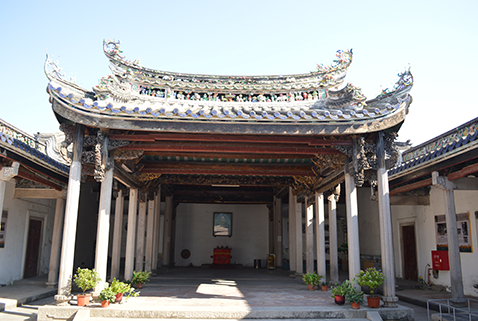
Congxi Ancestral Hall
Chaozhou Congxi Ancestral Hall was built by Chen Xunian, an overseas Chinese living in Johor, Malaysia. It was an outstanding representative of Chaozhou Ancestral Hall in the Qing Dynasty. The temple is famous for its superb stone carving art. The four stone carvings, which are inlaid on the stone wall of the gate tower, are unique in stone carving, such as scholar, farmer, industry, commerce, fisherman, woodcutter, farmer, farmer, farmer, fisherman, bird, insect, fish, bird, and phoenix. Each stone carving makes good use of the composition of the "zigzag" shape to focus people, things, and things in different time and space on the same picture. The figures have different attitudes, or cast nets to catch fish, or herding cattle to return, which is lifelike.
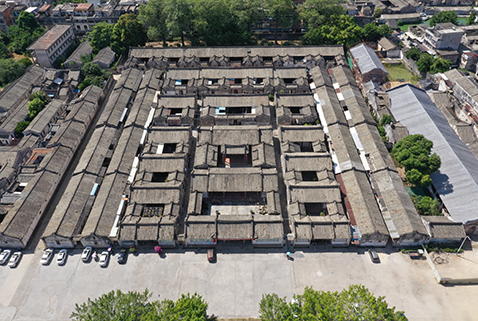
Puning Hongyang De'anli
De'anli, Hongyang, Puning, was the residence of Fang Yao, the commander of the Guangdong navy in the Qing Dynasty. It was built in the seventh year of Tongzhi (1863) of the Qing Dynasty, and is divided into three parts: the old village, the middle village and the new village (New De'anli). The old village is commonly known as the "Hundred Birds Towing the Phoenix". The middle village is a "four horse trailer". The three villages are connected. There are 733 houses inside, including ancestral hall, Buddha hall, official hall, study, bedroom, lotus pond, restaurant, warehouse, and seven back buildings. There are also a square in front of the village and a garden in the back, covering an area of about 40000 square meters. The "moat" river is built outside. It is a rare mansion style giant building group. The scale of the whole building, the essence of construction and the beauty of modeling can be called a wonderful work of architectural art.
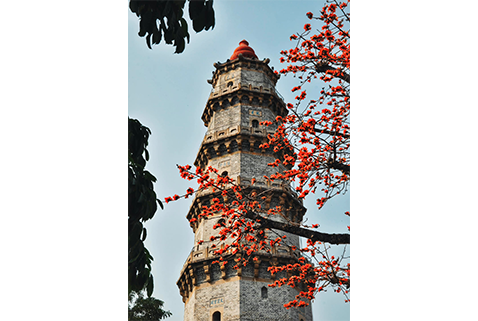
Chaoyang Wenguang Tower
Chaoyang Wenguang Tower is located in Shantou Chaoyang Cotton City on the coast of Hainan. It was built in the first year of Shaoxing in the Song Dynasty (1131) and rebuilt in the eighth year of Chongzhen in the Ming Dynasty (1635). It is a provincial cultural relics protection unit. The distinctive architectural art style and extremely rich cultural connotation make it have high scientific, cultural and social historical value.
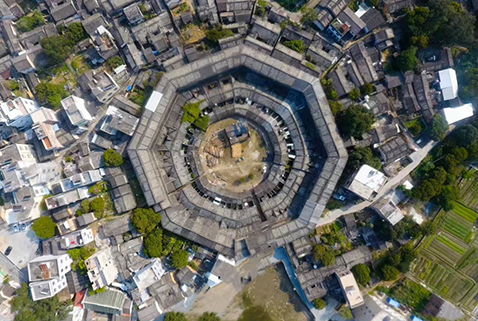
Chaozhou Daoyun Building
Daoyun Building, commonly known as the Building, is located in Nanlian Village, Sanrao Town, the northern mountain area of Raoping County, Chaozhou City, Guangdong Province. It was built in the 13th year of Chenghua (1477) of the Ming Dynasty and completed in the 15th year of Wanli (1587), covering an area of about 10000 square meters. It is the largest Hakka Tulou ever found in China, with a history of more than 400 years. Daoyun Building is famous for its "ancient, big, strange and beautiful" style. The whole building is in the shape of eight trigrams, and the lanes between them are separated. The building is full of multiples of 8 - 72 rooms, 32 wells and 112 ladders. There are two wells in the square inside the building, symbolizing the two yin and yang fish eyes in Tai Chi. Facing north, it is 328m in circumference, 11.5m high and 1.6m thick. Inside Daoyun Building, there are carved beams and painted buildings, upside down lotus flowers, murals, sculptures, etc. It is a tourist attraction for history, culture, folk customs, etc. On May 25, 2006, as an ancient building of the Ming Dynasty, Daoyun Building was approved by the State Council to be listed in the sixth batch of key cultural relics under national protection.
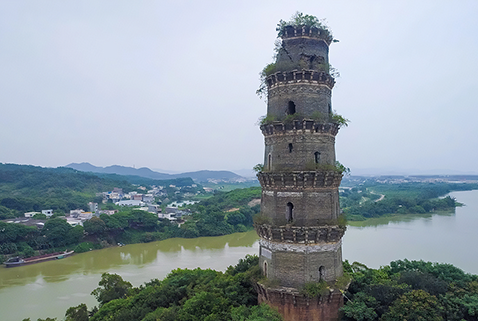
Chaozhou Sanyuan Tower
Sanyuan Pagoda was first built in the 33rd year of Wanli (1605 A.D.) and completed in the 35th year of Wanli (1607 A.D.). There are seven floors and eight sides, and the dougong is a masonry structure with eaves. Sanyuan Pagoda is located on Liyu Mountain, Jingwei Township, Jiangdong Town, Chao'an District. It faces Maotou Mountain across the river and is close to the water for tens of meters. During the peak flood season, the river is turbulent and swift. People call it "Jishui", so it is also called "Jishui Pagoda".

Chenghai Guanshan Academy
Guanshan Academy is the oldest ancient academy in Chenghai with the most complete preservation and use. Therefore, it has the reputation of "the first academy in Chengyi". Heroes have come forth in large numbers and its reputation is far and wide. Guanshan Academy is located from the south to the north, with its back against Guanshan (also called Holy Mountain). In front of the north gate, there is a bay goose pond (called academy pond or red leaf pond). The architectural style is typical of Chaoshan architecture, which is a single storey Xieshan civil architecture with three floors. Cai Nan, the third magistrate of Chenghai in the Ming Dynasty, donated salary silver to build it in the third year of Longqing in the Ming Dynasty (1569), which is a symbol of Chenghai's humanistic spirit.
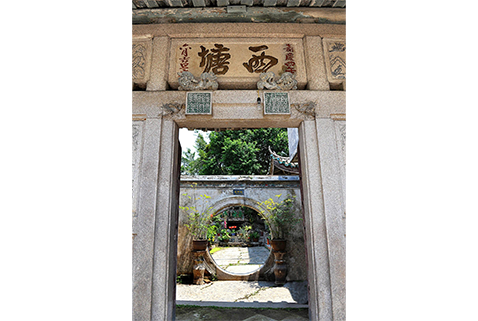
Chenghai Xitang
Chenghai Xitang, a famous Lingnan classical garden, covers an area of one mu and is located in Tangxi Village, Dongli Town, Chenghai District, Shantou City. It was first built in the fourth year of Jiaqing (1799) of the Qing Dynasty. During the reign of Guangxu, Yanshi was expanded in the style of Suzhou gardens. Although Xitang has more than mu, there are rockery lotus pool, living room and study, as well as garden flowers and trees. It was purchased by the Hong family of the Southern Society of Zhanglin in Guangxu period, and expanded according to the style of Suzhou gardens. It was built in successive dynasties.
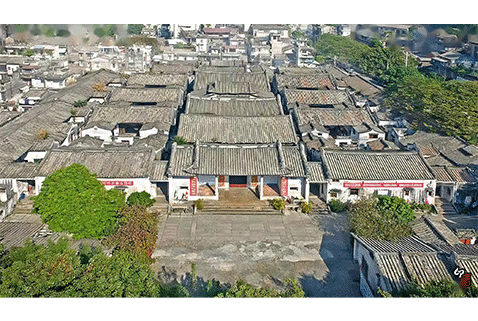
Former Residence of Ding Richang in Jieyang
The former residence of Ding Richang, formerly known as Ding Mansion or Ding Guanglu Ancestral Hall, is located in the middle of Yuanding Road, Rongcheng, Jieyang City. It covers an area of more than 6000 square meters. The building scale is grand, the layout is practical and generous, and it is not yet gorgeous. The main building faces south. There are 99 large and small houses and 1 basement in the old house, which is a typical ancestral hall style in Chaoshan area, and is called "Hundred Birds Chasing the Phoenix". The overall building structure is in the shape of "Xing" in the traditional style from the bird's eye view, implying the prosperity of wealth. Surrounded by canals on three sides, weeping willows brush the water, forming a peninsula. The architectural complex maintains the traditional architectural structure, materials and technology characteristics of Chaoshan area, especially the exquisite wood carvings with local characteristics. It is the leader of the ancient architectural complex in Chaoshan area, with strong regional characteristics and era characteristics.
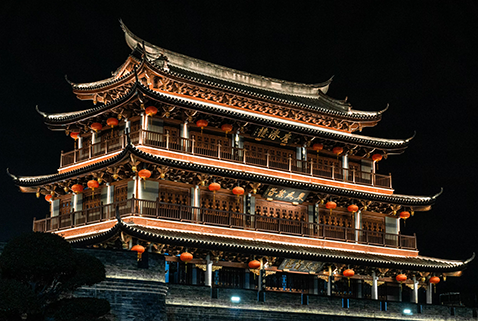
Chaozhou Guangji Building
Guangji Gate Tower was originally called "Guangji Tower", also known as "Hanjiang Tower", and commonly known as "East Gate Tower". It is the first of the seven city towers in the city of Lechao, and it is one of the symbols of a famous city. Guangji Building was built in the third year of Hongwu in the Ming Dynasty (1370). It was repaired to varying degrees in all previous dynasties and rebuilt in the 20th year of the Republic of China (1931). With its deep historical, scientific and artistic value.
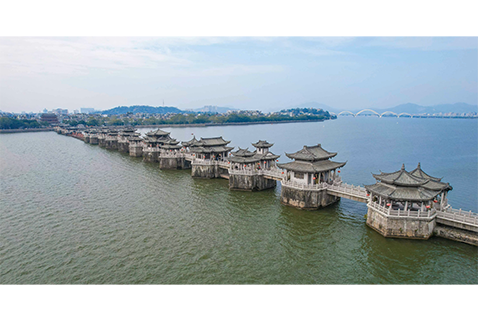
Chaozhou Guangji Bridge
Guangji Bridge, Chaozhou Guangji Bridge, formerly known as Kangji Bridge, Dinghou Bridge, Jichuan Bridge, commonly known as Xiangzi Bridge, also known as Chaozhou Xiangzi Bridge, is located outside the east gate of the ancient city of Chaozhou, Guangdong Province, across the Han River, connecting the east and west sides, integrating beam bridges, floating bridges, and arch bridges. It is a transportation hub from ancient Guangdong to Fujian and Zhejiang, one of the eight scenic spots of Chaozhou, a famous cultural relics tourist attraction in Chaoshan, and one of the four ancient bridges in China, National AAAA level scenic spot, a national key cultural relics protection unit, is praised by bridge expert Mao Yisheng as "the earliest open and closed bridge in the world".
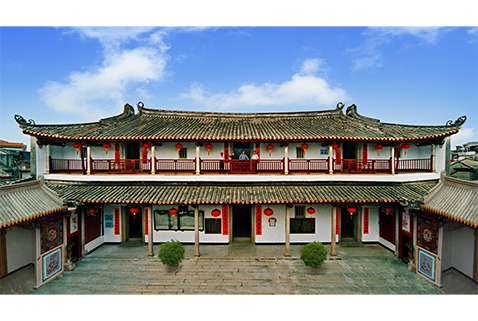
Jieyang Guoshi Building
Guo's Building is located in Jieyang City, Guangdong Province, in Mianhu Town, Jiexi County. The building was built in the 11th year of Emperor Yongzheng's reign (1733) of the Qing Dynasty and completed in the 11th year of Emperor Qianlong's reign (1746). The whole building covers an area of 5460 square meters. The front building has four entrances and three patios, and the back building has two floors. "Three stone steps" and "high threshold" are used in the building. It has rarely been flooded for 300 years; Stones and couplets are all from famous mountains and forests, which are constructed with exquisite workmanship, and the main body is still very stable. Guo's Building is known as "the most ancient residential buildings in Chaoshan" and "Chaoshan Qiao's Courtyard", and has been designated as the sixth batch of provincial cultural relics protection units in Guangdong Province.

Jieyang Jinxian Gate
Jinxian Gate is at the Xinxing intersection of Rongcheng in Jieyang today. It was built in the first year of Tianqi of the Ming Dynasty (1621), with the front facing east. It was named "Jinxian Gate" because it reached the school palace and promoted the cultivation of sages. In the Ming and Qing Dynasties, in order to analyze the Shigeng place, when the morning light first appeared, the trumpet sounded with the wind, dispelling the morning fog and ushering in the glow. It has its own charm when heard throughout the city. In the past, it was called "Xiaojiao, a reef building" and was listed as one of the eight scenic spots in Jieyang. On December 10, 2015, Jieyang Jinxian Gate was approved by the People's Government of Guangdong Province and announced as the eighth batch of cultural relics protection units in Guangdong Province. Jinxian Gate is a landmark of the ancient city of Jieyang. It is called "Qiao Lou Xiao Jiao" in Jieyang's "Eight Ancient Sceneries".
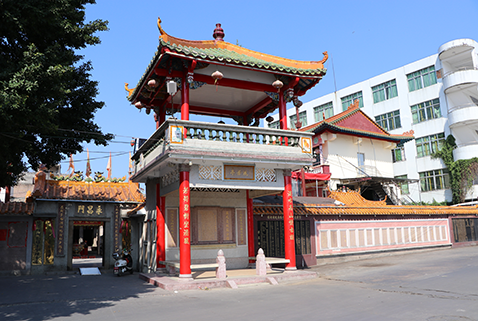
Jieyang Yongchang Ancient Temple
Mianhu Yongchang Ancient Temple is located in Beiyemen, Mianhu Town. It is a group of temples consisting of Xuantian Ancient Temple, Yunhu Nunnery and Yunjing Nunnery, covering an area of 1321 square meters. The ancient temple was built in the Song Dynasty. The temple is dedicated to the Arctic Zhenwu Xuantian God, and the temple is dedicated to the Three Sages of the Saha. The walls are inlaid with 60 pieces of Qing Dynasty exquisite three-dimensional stone reliefs. The ceiling hanging caisson has three layers of gold lacquer wood carvings with flowers inside and outside. The carving is exquisite and small. It is one of the two rare caissons in Qing Dynasty temples in the province. The temple is a millennium wood carving masterpiece. It is the only historical site in eastern Guangdong, also known as the "North Tower Buddha Light". The ancient temple was built in the Song Dynasty to worship the Yongchang Buddha; The nunnery worships the three sages of the Saha, among which is the saint emperor.
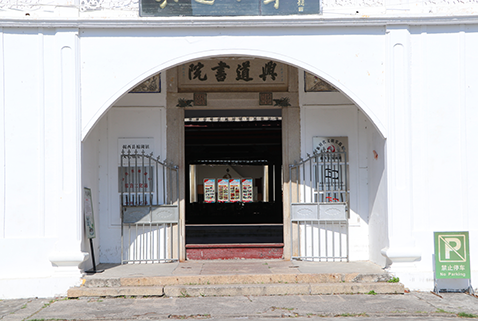
Jieyang Xingdao Academy
The Xingdao Academy in Mianhu Town, Jiexi County, was built by Fang Yao, the governor of Humen in the Qing Dynasty, in the sixth year of Tongzhi (1867 AD). It is located in the southeast corner of Mianhu Town, far from Puning Tieshan Bijia Peak, near Shengjing Yunhu Lake, surrounded by green trees and buildings. The academy is on the bank of Yunhu Lake. The original wall was demolished after liberation, and part of the lake bed was filled and leveled for group activities. Willows were planted on the lake side. Standing on the building of the Academy, I saw three mountains of emerald and one clear water. It was really beautiful.

Official Account

Customer Service
